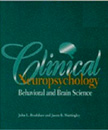The Category Test Norms. The program calculates two standard scores representing the total error score on the test. It calculates and reports a T score (Mean 50; Standard Deviation 10) based on the complete normative sample without an Age correction. It then calculates and reports a T score based on an Age correction. These norms were constructed using a continuous, smoothed regression model. The norms were based on the normative samples collected from 10 studies of the Category Test that used normal volunteers. The composite sample size was 1,400 subjects. Price: $199
|

|
|||||||||||||
Comparison Studies Below are citations to papers that examined the psychometric properties of computer forms of the Category Test or compared the computer form to the original and booklet forms. Additional studies of this type were reported in conference papers. In general these studies have found that all forms of the Category Test are comparable. Results of equivalence studies suggest that the intercorrelation of all forms are within the reliability of the test, as if all the versions were alternate forms. Beaumont, J. (1975). The validity of the category test administered by on-line computer. Journal of Clinical Psychology, 31 (3), 458-462. Berger, S. G., Chibnall, J. T., & Gfeller, J. D. (1994). The Category Test: A comparison of computerized and standard versions. Assessment, 1 (3), 255-258. Berger, S. G., Chibnall, J. T., & Gfeller, J. D. (1997). Construct validity of the computerized version of the Category Test. Journal of Clinical Psychology, 53 (7), 723-726. Brown, G. A. (1999). Factor analytic study of the Computerized Version of the Category Test - Young Children's Version . Dissertation Abstracts International: Section B: The Sciences and Engineering. Browndyke, J. N. (2001). The remote neuropsychological assessment-category test: Development and validation of a computerized, Internet-based neuropsychological assessment measure . Dissertation Abstracts International: Section B: The Sciences and Engineering. Choca, J., & Morris, J. (1992). Administering the Category Test by computer: Equivalence of results. Clinical Neuropsychologist, 6 (1), 9-15. Domire, J. C. (2004). Performance differences on a computerized version of the older Children's Category Test of the Halstead-Reitan Neuropsychological Test to differentiate between referred and non-referred children for gifted support services . Dissertation Abstracts International: Section B: The Sciences and Engineering. Guazzini, A., Lauro-Grotto, R., & Giannini, M. (2006). A computerized version of the Halstead Category Test: Preliminary data from an Italian sample. Testing Psicometria Metodologia, 13 (2), 91-109. Kelley-Gomez, D. J. (1999). Test-retest reliability and validity of the Computerized Version of the Category Test-Young Children's Version . Dissertation Abstracts International Section A: Humanities and Social Sciences. Mercer, W. N. (1995). Performance of brain-injured versus non-brain-injured individuals on three versions of the Category Test . Dissertation Abstracts International: Section B: The Sciences and Engineering. Mercer, W. N., Harrell, E., Miller, D. C., Childs, H. W., & et al. (1997). Performance of brain-injured versus healthy adults in three versions of the Category Test. Clinical Neuropsychologist, 11 (2), 174-179. Napora-Nulton, L. (2003). Performance differences on the computerized version of the Children's Category Test between male controls and male children with Attention Deficit Hyperactivity Disorder, learning disorder, and Borderline Intellectual Functioning . Dissertation Abstracts International Section A: Humanities and Social Sciences. |
||||||||||||||
Home | |
Products | |
Ordering | |
Contact | |
|---|




